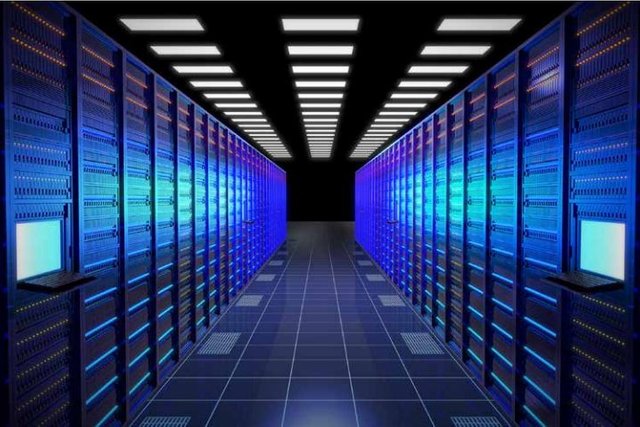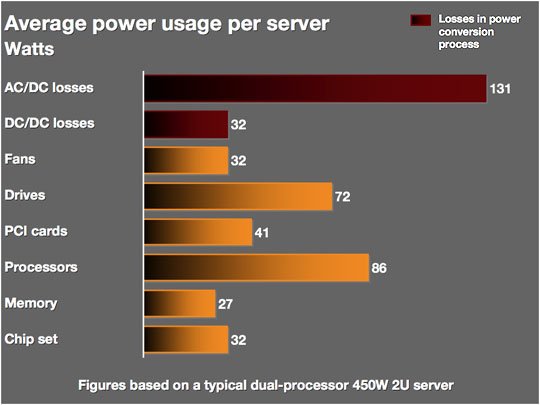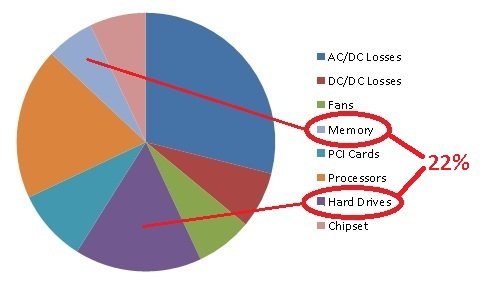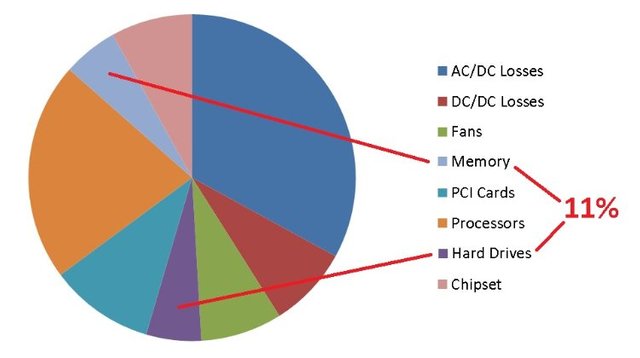
The US-based environmental protection advocate Natural Resources Defense Council (NRDC) recently published a report making the case for the need to find the way to reduce power in large-scale data centers, stating:
"In 2013, U.S. data centers consumed an estimated 91 billion kilowatt-hours of electricity. This is the equivalent annual output of 34 large (500-megawatt) coal-fired power plants, enough electricity to power all the households in New York City twice over. Data center electricity consumption is projected to increase to roughly 140 billion kilowatt-hours annually by 2020, the equivalent annual output of 50 power plants, costing American businesses $13 billion per year in electricity bills and causing the emission of nearly 150 million metric tons of carbon pollution annually.
If just half of the technical savings potential for data center efficiency that we identify in this report were realized (to take into account the market barriers discussed in this report), electricity consumption in U.S. data centers could be cut by as much as 40 percent. In 2014, this represents a savings of 39 billion kilowatt-hours annually, equivalent to the annual electricity consumption of all the households in the state of Michigan. Such improvement would save U.S. businesses $3.8 billion a year."
- Data Center Efficiency Assessment, NRDC (August 2013)
In another article I recently summarized a list of some salient points from a different source on how to conserve power in the data center. The original article from which I derived this summary shows "more efficient servers" at the bottom of the list, but little discussion was provided in the article on what a more efficient server actually means.
From the more obvious choices, we can readily assume two ways to realize more efficient servers would be:
- Buy New Servers – Perhaps effective but this usually involves a prohibitive up-front cash outlay that could give any CFO recurring nightmares.
- Upgrade Existing Servers – A less costly and (sometimes) less risky incremental approach to upgrading data center server performance while reducing power consumption for a fraction of the cost of buying new.
Assuming that going with the latter less costly upgrade approach is interesting, let's look at two easily upgradable components within the data center server itself:
- Memory
- Hard Drives
An analysis from green IT website Vertatique provides some insight into power consumption derived from various components of a "typical" dual-processor 2U server consuming an overall 450 watts of power. There are many assumptions and inherent inaccuracies stemming from this model, so please refer to the analysis for more details on the sample system. NOTE: Please keep in mind this all is based on information available on "paper only," is solely for discussion purposes, and requires verification on real systems which may show significantly different results from those discussed here.
The following graphic from Vertatique's website provides a breakdown of server power consumption and power losses derived from electrical power conversion.

Credit: Vertatique.com
Based on this model, a data center server’s hard drive contributes to approximately 16% of overall power consumption, with memory coming in with another 6%. Combined, these two components account for a full 22% of a server’s power consumption – no small portion.

Because Vertatique’s analysis was based partly on reporting done some years earlier, let’s assume that the “typical” server sample used both legacy memory (DDR3 or older) as well as spinning disk HDDs. Bearing in mind we’re interested in looking at reducing server power consumption, let’s recalculate the power figure assuming we use modern memory and SSDs made by ADATA Technology, a leading producer of DRAM memory and SSD purpose-made for data center servers.
Based on research ADATA has conducted in-house, a typical ADATA server SSD consumes only 30% of a legacy HDD’s power. Likewise, an ADATA server-based DDR4 memory module consumes only 80% of legacy DDR3 memory. By applying ADATA figures to the original “typical server”, we see a significant drop in power consumption.
The previous figure revised:


Based on this model when using ADATA SSD data storage SSDs and DDR4 memory modules, a data center may possibly realize an 11% reduction in server-based power consumption.
If you wish to conduct verification on your own, I encourage you to review and select from ADATA's products available in many form factors:
Did you know that some ADATA SSDs are able to protect your valuable data in the event of power failures or blackouts? Read about ADATA SSDs that feature internal Power Loss Protection.
Speed up your SSDs' performance using the TRIM command option on ADATA's free SSD Toolbox.
*******
Disclaimer:
This document contains approximations and "forward-looking statements" – that is, statements related to hypothetical, future, not past, events. In this context, forward-looking statements often address our expected future performance and conditions, including but not limited to performance on current, planned, or future activities or system performance, and often contain words such as "expect," "anticipate," "intend," "can," "should," "could," "expect," "intend," "with the intent," "potential," "plan," "believe," "seek," "see," "estimate," "approximate," "will," "would," or express ideas, concepts, performance, business strategy, and results in the present tense as a way to express ideas, concepts, performance, business strategy, and results that ADATA Technology Co., Ltd. ("ADATA") may desire to take place in the future. Also included are the negative of these words or other variations of them or comparable terminology, which may indicate forward-looking statements, but their absence does not mean that a statement is not forward looking.
Forward-looking statements by their nature address matters that are, to different degrees, uncertain. For us, particular uncertainties that could cause our actual results to be materially different than those expressed in our forward-looking statements include but are not limited to performance characteristics mentioned in this document and its title. These uncertainties may cause the actual results, performance or achievements of ADATA to be materially different from any future results, performance or achievements that may be expressed or implied by such forward-looking statements or anticipated on the basis of historical trends or hypothetical conditions. ADATA neither intends, nor assumes any obligation, to update or revise these forward-looking statements in light of developments which differ from those anticipated.